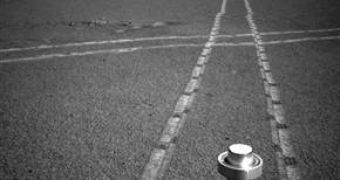The two rovers on the surface of Mars are not doing very well, as the dust storm continues and is showing no signs of decreasing in intensity. Rising dust blocks sunlight from reaching the two rovers, who are now operating just above the critical energy level.
NASA is worried that things could get worse. These storms appear when the planet is closest to the Sun, which increases the overall temperature and produces huge winds that lift the dust into the atmosphere.
This one has reduced the amount of light the rovers' solar panels receive by more than two thirds, which means that of the 900 watt-hours of power per day at the beginning of their mission, Spirit is now operating at around 400 watt-hours of daily power and Opportunity at only around 300 watt-hours.
"However, they are still above our minimum keep-alive power by a very comfortable margin," says Steven Squyres, the mission's chief scientist at Cornell University in Ithaca, New York, US.
Scientists don't know exactly how long the storm will last, but if it doesn't stop soon it could permanently damage the rovers, if their power drops to below 250 watt-hours. This has forced NASA to cancel the planned descend of the Opportunity into the 230-foot-deep Victoria Crater.
"We have no schedule for the entry into Victoria crater," said Squyres. "We can't predict the weather with any certainty, so we're taking it day by day."
Also, the loss of power has temporarily put the rovers to sleep, to conserve energy. "We only plan to stay up for a short period of time, and then we command the vehicle to go to sleep," said Jacob Matijevic, chief of the rover engineering team, who is based at NASA's Jet Propulsion Laboratory in California.
There is one advantage of this storm that will become visible after it slows down. "One side benefit of the high winds that have caused this dust storm is that they have done a wonderful job of removing dust from the solar arrays on both rovers," explained Squyres.
The solar arrays on Opportunity are cleaner now than they were three and a half years ago, when it landed, so they will be able to collect more energy once the sky clears up.

 14 DAY TRIAL //
14 DAY TRIAL //